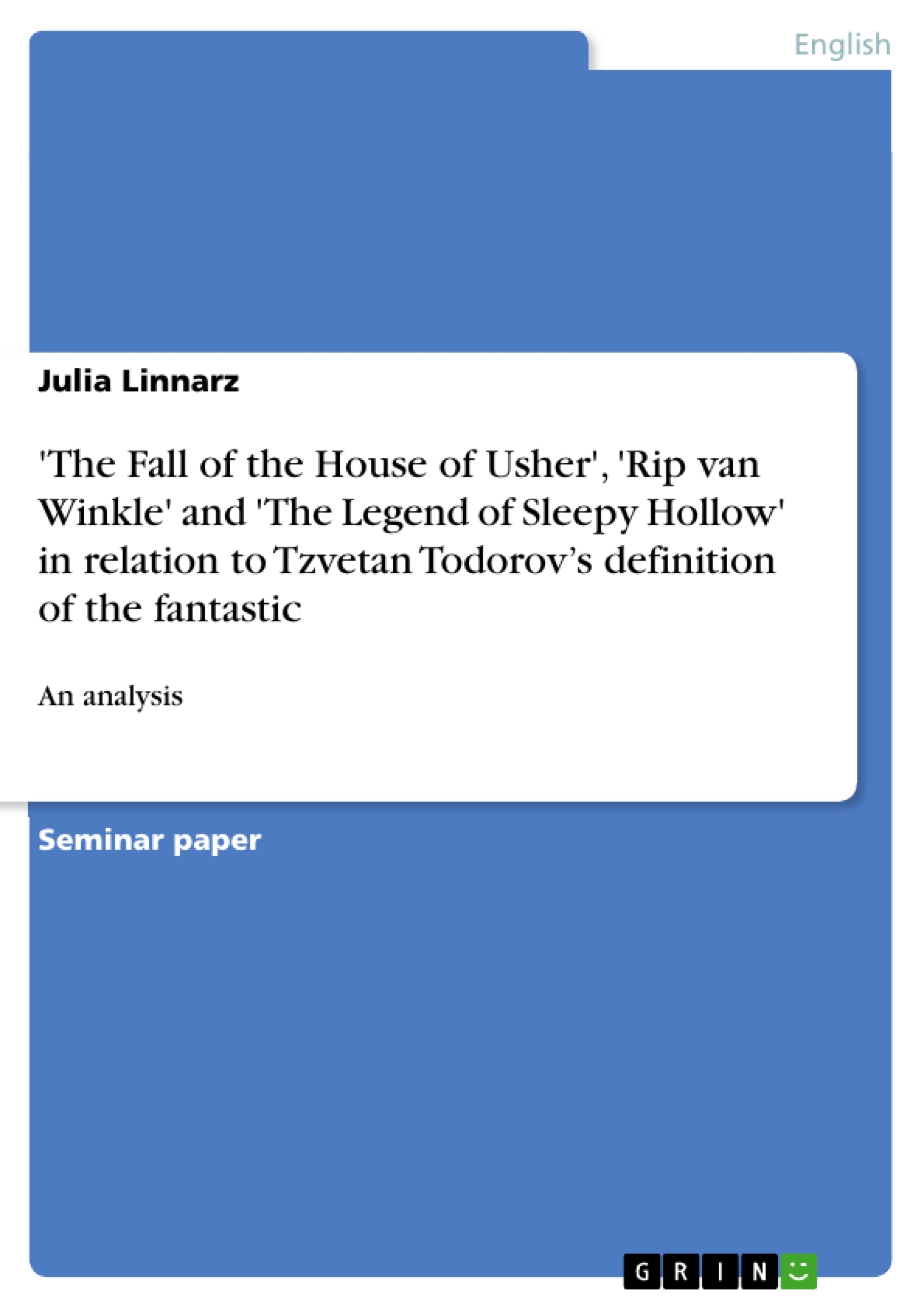Common themes of American Romanticism were sentimentalism, primitivism and the cult of the noble savage, political liberalism, the celebration of natural beauty and the simple life, idealization of the common man and an interest in the picturesque past. Additionally, an interest in the supernatural or in “the crepuscular heart of mystery” (Hart 725) was a widespread topic used by romantic authors. The latter used the supernatural to deal with the disorienting situation of 19th cen-tury American culture, which was not only pressured by the frontier experience but also by an un-ease concerning the experiment of democracy, the virtual nonexistence of a developed American society and racial issues especially relating to slavery and the Native Americans. Additionally, the occupation with the supernatural showed the American romanticists’ concern with the “culture’s occupation with death in an increasingly secular, individualistic, and scientific age”.
Two romantic authors that tried their hand as supernatural tales are Washington Irving and Ed-gar Allan Poe. In their supernatural tales ghosts, ghouls, vampires and other mysterious beings as well as inexplicable phenomena make their appearance. Some of these appearances can be ration-ally explained; others are clearly of supernatural origin. The reader of supernatural tales usually chooses one or the other explanation. However, sometimes the reader hesitates between the two. Stories, in which the latter is the case, are according to Tzvetan Todorov’s definition situated in the fantastic.
In my opinion Washington Irving’s tales Rip van Winkle and The Legend of Sleepy Hollow and Edgar Allan Poe’s The Fall of the House of Usher belong to different literary genres even though they both constitute supernatural stories. The former belong to the fantastic, while the latter does not. This hypothesis will either be proven wrong or right in the course of this paper. To do so, I will first focus on the definition of the fantastic, which is, as mentioned above, given by Tzvetan Todorov in his book The Fantastic: A Structural Approach to a Literary Genre. In a second step I will apply Todorov’s definition to Irving’s and Poe’s tales.
Inhalt
1. The rise of the supernatural tale in American Romanticism
2. The literary genres of the fantastic, the uncanny and the marvelous: A definition
2.1. The fantastic
2.2. The uncanny and the marvelous
3. Rip van Winkle and The Legend of Sleepy Hollow as fantastic tales?
3.1. Rip van Winkle
3.2. The Legend of Sleepy Hollow
4. The Fall of the House of Usher as a tale of the uncanny?
5. Conclusion
6. Works cited
6.1. Primary Works
6.2. Secondary Works
- Arbeit zitieren
- Julia Linnarz (Autor:in), 2009, 'The Fall of the House of Usher', 'Rip van Winkle' and 'The Legend of Sleepy Hollow' in relation to Tzvetan Todorov’s definition of the fantastic, München, GRIN Verlag, https://www.grin.com/document/157057
-

-

-

-
Laden Sie Ihre eigenen Arbeiten hoch! Geld verdienen und iPhone X gewinnen. -

-
Laden Sie Ihre eigenen Arbeiten hoch! Geld verdienen und iPhone X gewinnen. -

-
Laden Sie Ihre eigenen Arbeiten hoch! Geld verdienen und iPhone X gewinnen. -

-
Laden Sie Ihre eigenen Arbeiten hoch! Geld verdienen und iPhone X gewinnen. -

-
Laden Sie Ihre eigenen Arbeiten hoch! Geld verdienen und iPhone X gewinnen.

